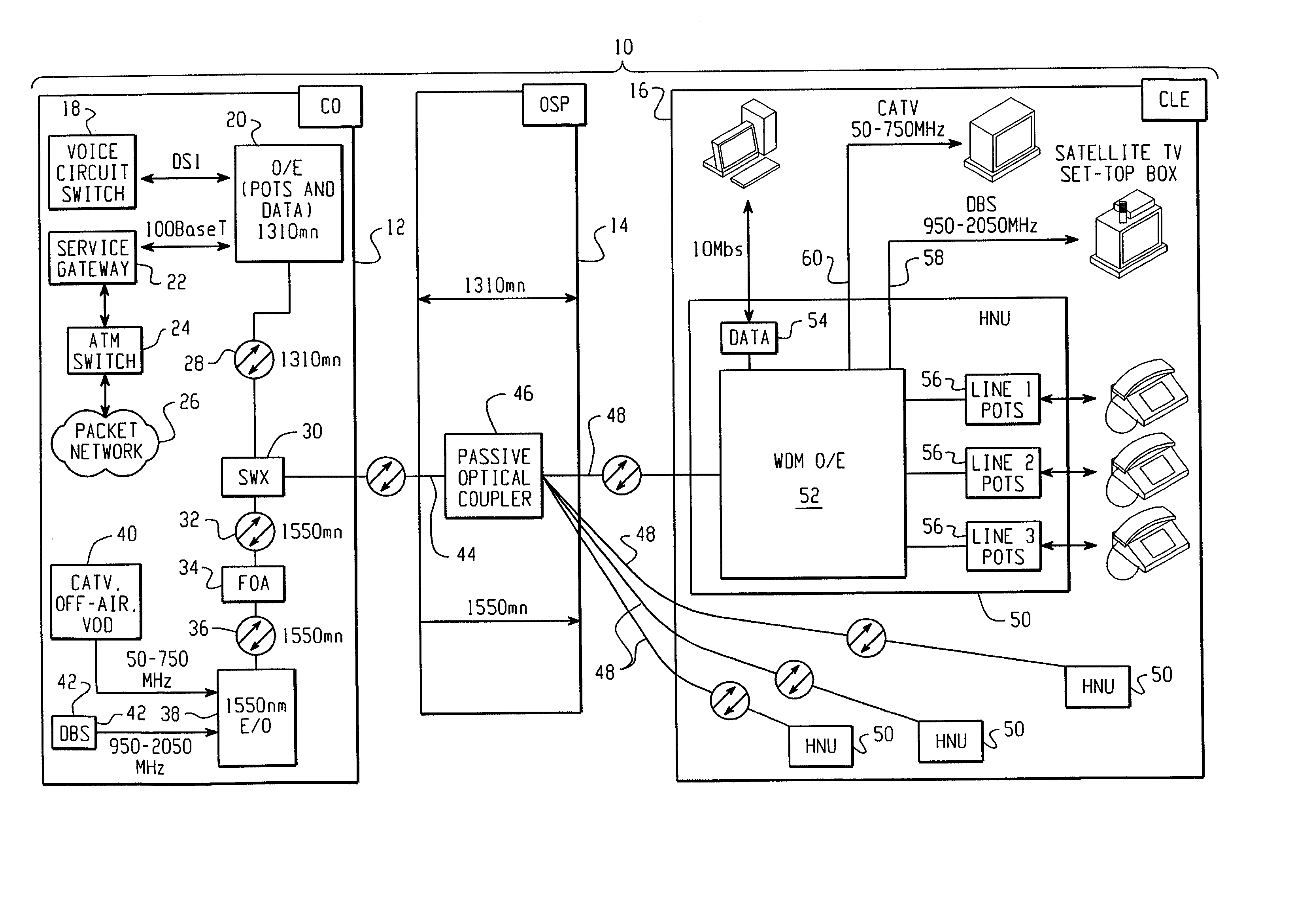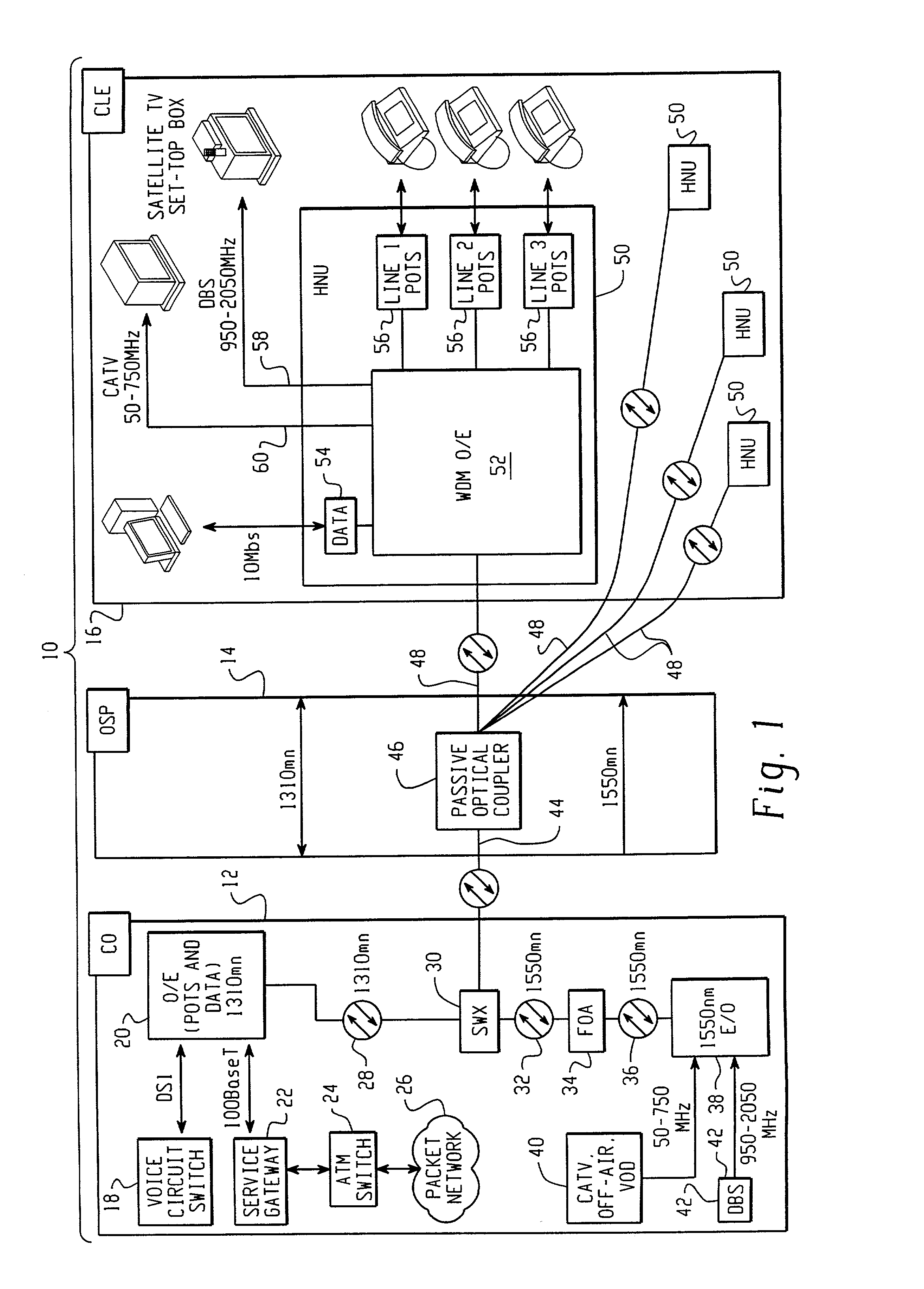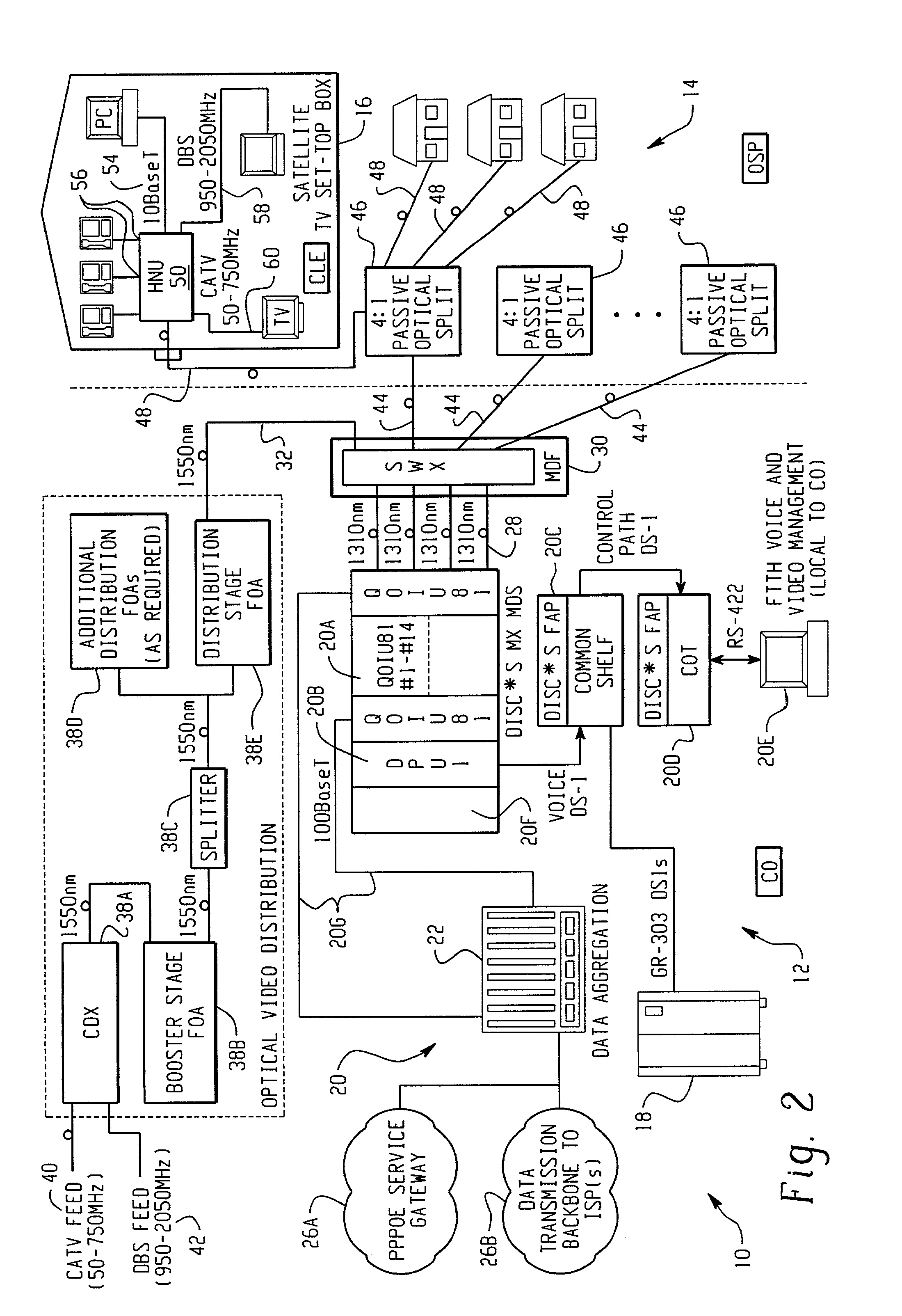Fiber to the home (FTTH) multimedia access system with reflection PON
a multimedia access system and fiber-to-the-home technology, applied in the field of broadband multimedia communication systems, can solve the problems of limiting the ability to receive and transmit high-speed data signals along with traditional quality voice signals, access parts of the network are not well matched to the type of information, and user demand to shi
- Summary
- Abstract
- Description
- Claims
- Application Information
AI Technical Summary
Benefits of technology
Problems solved by technology
Method used
Image
Examples
first embodiment
[0144] FIG. 17 sets forth a 1:N reflective passive optical coupler for use in a passive optical network. The use of this unique reflective coupler, in combination with advanced half-duplex signaling techniques, enables the FTTH systems disclosed herein to achieve higher data transmission rates. The 1:N reflective optical coupler 46 is used in place of the 1:4 splitter 46 shown in FIGS. 1-3, and includes a single upstream transmission port coupled to an extension fiber 44, and N downstream transmission ports, which are coupled to a plurality of drop fibers 48.
[0145] With the system shown in FIGS. 1-3, each of the HNUs 50 attached to a particular 1:4 splitter 46 cannot "see" whether the other HNUs 50 are transmitting upstream on the extension fiber 44. Because of this limitation, the system utilized a full-duplex communication protocol in which the central office instructed the HNUs 50 as to when they should communicate upstream on the extension fiber 44. FIG. 7, and accompanying desc...
second embodiment
[0154] FIG. 18 sets forth the reflective passive optical coupler 46 shown in FIG. 17. The structure of the reflective coupler 46 in this embodiment is similar to that shown in FIG. 17, except that it replaces the upstream 1.times.2 splitter / coupler 402 with another 2.times.2 splitter / coupler 404I. This configuration is for use with a system in which the telephony / data signals 28 from the host OIU 20 and the video signals 32 from the video source 40 are delivered over separate extension fibers, and are not combined at the central office SWX equipment 30. In this configuration, the coupler 46 includes two upstream transmission ports, one for each of the extension fibers, and N downstream transmission ports, one for each of the drop fibers.
third embodiment
[0155] FIG. 19 sets forth the reflective passive optical coupler 46 shown in FIG. 17. This embodiment includes a 1.times.2 splitter / coupler 402 coupled to the upstream transmission port, and four additional 1.times.2 splitter / couplers 404E, 404F, 404G, 404H coupled to the eight downstream transmission ports. Coupling the 1.times.2 couplers are three additional 2.times.2 splitter couplers 404A, 404C, 404D.
[0156] FIG. 20 sets forth a timing diagram for communicating over a passive optical network (PON) utilizing one or more of the three reflective optical couplers shown in FIGS. 17-19. The first diagram 410 shows the burst structure on the fiber 44 in which each of the HNUs 50 is enabled for maximum burst length. As shown here, the HNUs 50 transmit in a round-robin order on the fiber 44, starting at HNU N0 through N8 before returning to N0. Preferably, the maximum burst length for each HNU is limited to permit the transmission of time-critical information, and also to ensure that no o...
PUM
 Login to View More
Login to View More Abstract
Description
Claims
Application Information
 Login to View More
Login to View More - R&D
- Intellectual Property
- Life Sciences
- Materials
- Tech Scout
- Unparalleled Data Quality
- Higher Quality Content
- 60% Fewer Hallucinations
Browse by: Latest US Patents, China's latest patents, Technical Efficacy Thesaurus, Application Domain, Technology Topic, Popular Technical Reports.
© 2025 PatSnap. All rights reserved.Legal|Privacy policy|Modern Slavery Act Transparency Statement|Sitemap|About US| Contact US: help@patsnap.com



